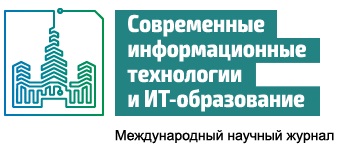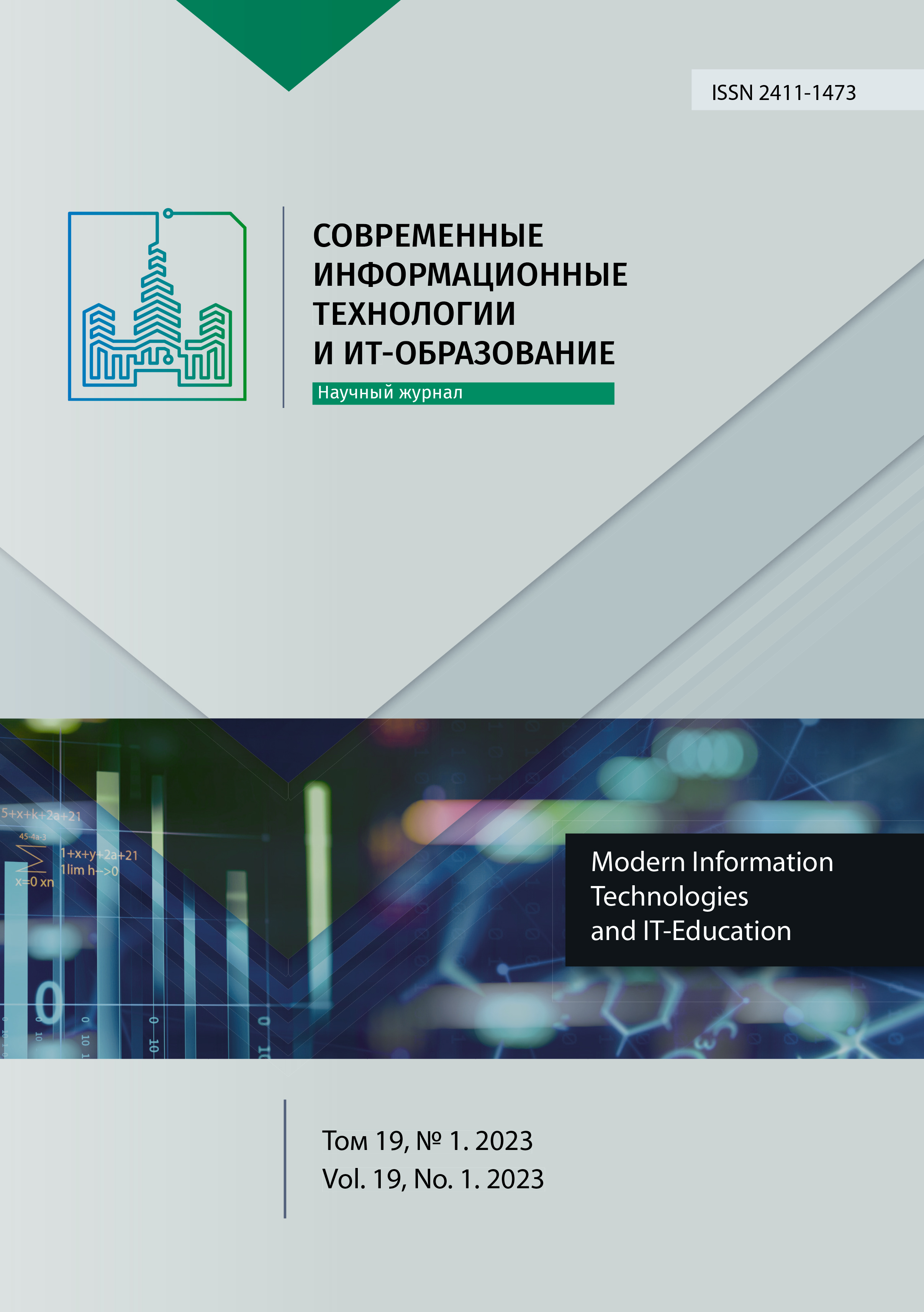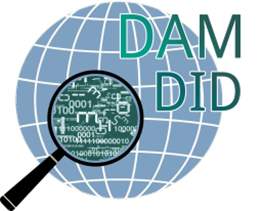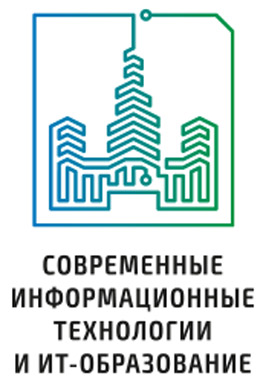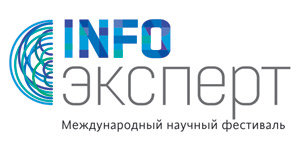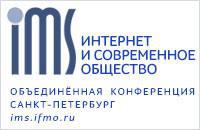Применение технологий обучения с подкреплением и параллельного программирования для генерации и валидации программного кода
Аннотация
На текущий момент нейросети способны создавать то, что раньше считалось недосягаемым: фотореалистичные лица людей; полноценные картины по грубым наброскам; любые изображения по краткому текстовому описанию; стихи и прозу по первым строчкам или заданной теме. Все это стало возможно благодаря стремительному прогрессу в таких областях как обработка естественного языка и машинное зрение. Нейросети способны генерировать контент на основе тех данных, которые они запомнили во время обширного процесса обучения. Задачи на логику, математику и логические рассуждения является примером гибкого интеллекта, и он требует совершенно других подходов к обучению. Представленное в статье исследование предлагает выработку методологии проектирования и обучения нейросетей направленных на создание функционирующего кода. Основой исследования является возможность применения искусственного интеллекта, в частности нейронных сетей, на генерацию кода машиной, то есть задач AI4Code. В исследовании рассмотрены положения в пользу применения обучение с подкреплением в сравнении с языковыми моделями, а также архитектура необходимой для такого обучения среды. Основной исследования является направленность на использование графических ускорителей Nvidia и использование центральных процессов различных архитектур. В статье рассмотрены особенности создания среды обучения, достоинства и недостатки платформы CUDA, проведен анализ потенциальной эффективности каждого из подходов.
Литература
2. Puri R. et al. CodeNet: A Large-Scale AI for Code Dataset for Learning a Diversity of Coding Tasks. In: Vanschoren J., Yeung S. (eds.) Proceedings of the Neural Information Processing Systems Track on Datasets and Benchmarks. Vol. 1. Curran; 2021. p. 1-13. Available at: https://datasets-benchmarks-proceedings.neurips.cc/paper_files/paper/2021/file/a5bfc9e07964f8dddeb95fc584cd965d-Paper-round2.pdf (accessed 11.02.2023).
3. Vaswani A., Shazeer N., Parmar N. et al. Attention Is All You Need. In: Guyon I. et al. (eds.) Proceedings of the 31st International Conference on Neural Information Processing Systems (NIPS'17). Red Hook, NY, USA: Curran Associates Inc.; 2017. Vol. 30. p. 6000-6010. Available at: https://dl.acm.org/doi/pdf/10.5555/3295222.3295349 (accessed 11.02.2023).
4. Brown T.B., Mann B., Ryder N. et al. Language Models are Few-Shot Learners. In: Larochelle H., Ranzato M., Hadsell R., Balcan M.F., Lin H. (eds.) Advances in Neural Information Processing Systems. Red Hook, NY, USA: Curran Associates Inc.; 2020. Article no. 159. p. 1877-1901. Available at: https://papers.nips.cc/paper_files/paper/2020/file/1457c0d6bfcb4967418bfb8ac142f64a-Paper.pdf (accessed 11.02.2023).
5. Radford A., Wu J., Child R. et al. Language Models are Unsupervised Multitask Learners. OpenAI blog. 2019;1(8):9. Available at: https://d4mucfpksywv.cloudfront.net/better-language-models/language-models.pdf (accessed 11.02.2023).
6. Schick T., Schütze H. Few-Shot Text Generation with Natural Language Instructions. In: Moens M.-F., Huang X., Specia L., Wen-tau Yih S. (eds.) Proceedings of the 2021 Conference on Empirical Methods in Natural Language Processing. Punta Cana, Dominican Republic: Association for Computational Linguistics; 2021. p. 390-402. https://doi.org/10.18653/v1/2021.emnlp-main.32
7. Winata G.I., Madotto A., Lin Z., Liu R., Yosinski J., Fung P. Language Models are Few-shot Multilingual Learners. In: Proceedings of the 1st Workshop on Multilingual Representation Learning. Punta Cana, Dominican Republic: Association for Computational Linguistics; 2021. p. 1-15. https://doi.org/10.18653/v1/2021.mrl-1.1
8. Chen M. et al. Evaluating Large Language Models Trained on Code. arXiv:2107.03374. 2021. Available at: https://arxiv.org/abs/2107.03374 (accessed 11.02.2023).
9. Rubio C., Mella F., Martínez C., Segura A., Vidal C. Exploring Copilot Github to Automatically Solve Programming Problems in Computer Science Courses. In: 2023 42nd IEEE International Conference of the Chilean Computer Science Society (SCCC). Concepcion, Chile: IEEE Computer Society; 2023. p. 1-8. https://doi.org/10.1109/SCCC59417.2023.10315758
10. Drori I. et al. A neural network solves, explains, and generates university math problems by program synthesis and few-shot learning at human level. PNAS. 2022;119(32):e2123433119. https://doi.org/10.1073/pnas.2123433119
11. Li Y. et al. Competition-level code generation with AlphaCode. Science. 2022;378(6624):1092-1097. https://doi.org/10.1126/science.abq1158
12. Baker B. et al. Emergent Tool Use From Multi-Agent Autocurricula. In: International Conference on Learning Representations. Addis Ababa, Ethiopia; 2020. p. 1-28. Available at: https://openreview.net/forum?id=SkxpxJBKwS (accessed 11.02.2023).
13. Fan L. et al. MineDojo: Building Open-Ended Embodied Agents with Internet-Scale Knowledge. In: Thirty-sixth Conference on Neural Information Processing Systems (NeurIPS 2022). Track on Datasets and Benchmarks. New Orleans; 2022. p. 1-20. Available at: https://nips.cc/virtual/2022/poster/55737 (accessed 11.02.2023).
14. Fawzi A., Balog M., Huang A. et al. Discovering faster matrix multiplication algorithms with reinforcement learning. Nature. 2022;610:47-53. https://doi.org/10.1038/s41586-022-05172-4
15. Silver D., Schrittwieser J., Simonyan K. et al. Mastering the game of Go without human knowledge. Nature. 2017;550:354-359. https://doi.org/10.1038/nature24270
16. Silver D., Huang A., Maddison C. et al. Mastering the game of Go with deep neural networks and tree search. Nature. 2016;529:484-489. https://doi.org/10.1038/nature16961
17. Bhagirath, Mittal N., Kumar S. Machine Learning Computation on Multiple GPU's using CUDA and Message Passing Interface. In: 2019 2nd International Conference on Power Energy, Environment and Intelligent Control (PEEIC). Greater Noida, India: IEEE Computer Society; 2019. p. 18-22. https://doi.org/10.1109/PEEIC47157.2019.8976714
18. Diehl P., Seshadri M., Heller T., Kaiser H. Integration of CUDA Processing within the C++ Library for Parallelism and Concurrency (HPX). In: 2018 IEEE/ACM 4th International Workshop on Extreme Scale Programming Models and Middleware (ESPM2). Dallas, TX, USA: IEEE Computer Society; 2018. p. 19-28. https://doi.org/10.1109/ESPM2.2018.00006
19. Kerr A., Diamos G., Yalamanchili S. Modeling GPU-CPU workloads and systems. In: Proceedings of the 3rd Workshop on General-Purpose Computation on Graphics Processing Units (GPGPU-3). Association for Computing Machinery, New York, NY, USA; 2010. p. 31-42. https://doi.org/10.1145/1735688.1735696
20. Lustig D., Sahasrabuddhe S., Giroux O. A Formal Analysis of the NVIDIA PTX Memory Consistency Model. In: Proceedings of the Twenty-Fourth International Conference on Architectural Support for Programming Languages and Operating Systems (ASPLOS '19). Association for Computing Machinery, New York, NY, USA; 2019. p. 257-270. https://doi.org/10.1145/3297858.3304043
21. Abdelkhalik H., Arafa Y., Santhi N., Badawy A. -H. A. Demystifying the Nvidia Ampere Architecture through Microbenchmarking and Instruction-level Analysis. In: 2022 IEEE High Performance Extreme Computing Conference (HPEC). Waltham, MA, USA: IEEE Computer Society; 2022. p. 1-8. https://doi.org/10.1109/HPEC55821.2022.9926299
22. van Stigt R., Swatman S.N., Varbanescu A.-L. Isolating GPU Architectural Features Using Parallelism-Aware Microbenchmarks. In: Proceedings of the 2022 ACM/SPEC on International Conference on Performance Engineering (ICPE '22). Association for Computing Machinery, New York, NY, USA; 2022. p. 77-88. https://doi.org/10.1145/3489525.3511673
23. Sun W., Li A., Geng T., Stuijk S., Corporaal H. Dissecting Tensor Cores via Microbenchmarks: Latency, Throughput and Numeric Behaviors. IEEE Transactions on Parallel and Distributed Systems. 2023;34(1):246-261. https://doi.org/10.1109/TPDS.2022.3217824
24. Christiano P. et al. Deep reinforcement learning from human preferences. In: Guyon I. et al. (eds.) Proceedings of the 31st International Conference on Neural Information Processing Systems (NIPS'17). Red Hook, NY, USA: Curran Associates Inc.; 2017. Vol. 30. p. 1-9. Available at: https://proceedings.neurips.cc/paper_files/paper/2017/hash/d5e2c0adad503c91f91df240d0cd4e49-Abstract.html (accessed 11.02.2023).
25. Schieffer G., Peng I. Accelerating Drug Discovery in AutoDock-GPU with Tensor Cores. In: Cano J., Dikaiakos M.D., Papadopoulos G.A., Pericàs M., Sakellariou R. (eds.) Euro-Par 2023: Parallel Processing. Euro-Par 2023. Lecture Notes in Computer Science. Vol. 14100. Springer, Cham; 2023. p. 608-622. https://doi.org/10.1007/978-3-031-39698-4_41

Это произведение доступно по лицензии Creative Commons «Attribution» («Атрибуция») 4.0 Всемирная.
Редакционная политика журнала основывается на традиционных этических принципах российской научной периодики и строится с учетом этических норм работы редакторов и издателей, закрепленных в Кодексе поведения и руководящих принципах наилучшей практики для редактора журнала (Code of Conduct and Best Practice Guidelines for Journal Editors) и Кодексе поведения для издателя журнала (Code of Conduct for Journal Publishers), разработанных Комитетом по публикационной этике - Committee on Publication Ethics (COPE). В процессе издательской деятельности редколлегия журнала руководствуется международными правилами охраны авторского права, нормами действующего законодательства РФ, международными издательскими стандартами и обязательной ссылке на первоисточник.
Журнал позволяет авторам сохранять авторское право без ограничений. Журнал позволяет авторам сохранить права на публикацию без ограничений.
Издательская политика в области авторского права и архивирования определяются «зеленым цветом» в базе данных SHERPA/RoMEO.
Все статьи распространяются на условиях лицензии Creative Commons «Attribution» («Атрибуция») 4.0 Всемирная, которая позволяет другим использовать, распространять, дополнять эту работу с обязательной ссылкой на оригинальную работу и публикацию в этом журналe.
